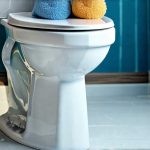Brunch – the delightful in-between meal that’s become synonymous with lazy weekends, social gatherings, and delicious food. It’s often celebrated as a time for indulgence, but for individuals managing bladder sensitivities or conditions like interstitial cystic syndrome (IC), navigating brunch can feel less about enjoyment and more about anxiety. The fear of urgent bathroom trips or discomfort can overshadow the joy of connecting with friends and family. However, it’s absolutely possible to enjoy a vibrant and satisfying brunch without compromising your bladder health. This article provides practical tips and mindful choices to help you create – and savor – balanced, bladder-friendly brunches that leave you feeling good from start to finish.
The key isn’t about strict restriction or deprivation; it’s about informed decision-making and understanding how certain foods and beverages can impact your bladder. We will explore strategies for crafting a brunch menu that minimizes potential triggers, focusing on nourishing ingredients and mindful portions. This guide aims to empower you with the knowledge and confidence to participate fully in this beloved social ritual, transforming what might be a source of worry into a truly enjoyable experience. Remember, individual sensitivities vary greatly, so paying attention to your own body’s signals is paramount.
Building Your Bladder-Friendly Brunch Menu
Creating a brunch menu that supports bladder health starts with understanding potential triggers and making thoughtful substitutions. Many common brunch staples can exacerbate bladder symptoms for some individuals. Highly acidic foods like citrus fruits (oranges, grapefruit, lemons), tomatoes, and vinegar-based dressings often top the list of irritants. Similarly, caffeinated beverages – coffee, tea, and even chocolate – can increase urgency and frequency. Artificial sweeteners, spicy foods, and alcohol are also frequently reported triggers. However, this doesn’t mean you have to eliminate these items entirely. Moderation is key, and finding your personal tolerance level is crucial.
Instead of focusing on what to avoid, let’s emphasize the abundance of bladder-friendly options available. Consider incorporating foods that are naturally soothing and hydrating. Think about alternatives like herbal teas (chamomile, peppermint – but test first as some find even these irritating), water infused with cucumber or berries, and decaffeinated beverages. When it comes to food, lean proteins, whole grains, and non-citrus fruits are excellent choices. For instance, swapping orange juice for pear nectar or replacing a tomato-based salsa with avocado crema can make a significant difference. The goal is to enjoy delicious food without triggering bladder flares, and tracking what you eat can help – explore daily food diary tips for better understanding your triggers.
A well-rounded brunch menu should also prioritize balance. Combining protein, carbohydrates, and healthy fats helps stabilize blood sugar levels and prevent cravings that might lead you to reach for trigger foods. A simple example could be scrambled eggs with spinach (protein & veggies), whole-wheat toast (complex carbohydrate), and a small serving of avocado (healthy fat). This combination provides sustained energy and minimizes the likelihood of bladder irritation compared to a sugary cereal or pastry-heavy meal.
Navigating Common Brunch Dishes
Many popular brunch dishes can be adapted to become more bladder-friendly with just a few modifications. Pancakes, for example, are often made with acidic ingredients like buttermilk or citrus zest. You can easily substitute almond milk or oat milk for buttermilk and omit the citrus. Similarly, waffles can benefit from using a less acidic batter recipe. When ordering out at restaurants, don’t hesitate to ask about ingredient substitutions – most establishments are happy to accommodate dietary needs.
Beyond pancakes and waffles, consider these adaptations: – Eggs Benedict: Opt for hollandaise sauce made with minimal lemon juice or request it on the side. – French Toast: Use a less acidic bread like brioche and avoid overly sweet toppings. – Breakfast Burritos: Skip the spicy salsa and tomato-based sauces, opting instead for avocado or mild cheese. – Mimosas: Substitute sparkling water for champagne, or limit alcohol intake significantly. Remember that portion control is also crucial. Even bladder-friendly foods can cause issues if consumed in excessive amounts.
Hydration Strategies During Brunch
Staying adequately hydrated is essential for overall health, but it requires a mindful approach when managing bladder sensitivities. While drinking plenty of water is generally recommended, some individuals find that large volumes of liquid can exacerbate urgency and frequency. The key is to sip on small amounts of fluid throughout brunch rather than gulping down large glasses at once. This helps distribute the hydration more evenly and reduces pressure on the bladder.
Consider incorporating hydrating foods into your meal as well. Water-rich fruits like pears, watermelon (in moderation), and cantaloupe can contribute to your overall fluid intake without overwhelming your bladder. Herbal teas, as previously mentioned, are another excellent option. Avoid sugary drinks or those containing artificial sweeteners, as these can often be irritating. Listen to your body’s signals – if you start feeling the urge to urinate frequently, reduce your fluid intake slightly and focus on bladder-soothing strategies (see below). You might also find helpful hydration tips for ongoing stability.
Pre & Post Brunch Bladder Soothing Techniques
Preparing for brunch isn’t just about the menu; it also involves proactive bladder management. Before leaving home, empty your bladder completely. This minimizes the risk of needing to go urgently during the meal. During brunch, practice pelvic floor exercises (Kegels) discreetly to strengthen the muscles that support your bladder and urethra. These exercises can help improve bladder control and reduce leakage.
After brunch, continue to monitor your symptoms and adjust your fluid intake accordingly. If you notice any irritation or discomfort, avoid caffeine, alcohol, and acidic foods for the rest of the day. Consider practicing relaxation techniques like deep breathing or meditation to calm your nervous system and reduce stress, which can sometimes exacerbate bladder symptoms. Finally, keep a food diary to track what you ate and how it affected your bladder. This will help you identify personal triggers and refine your brunch choices in the future. Remember that managing bladder health is an ongoing process of self-discovery and adaptation, but with mindful planning and proactive strategies, you can enjoy brunch – and life – to the fullest. To further support this, consider exploring pelvic floor relaxation techniques for daily comfort.





















